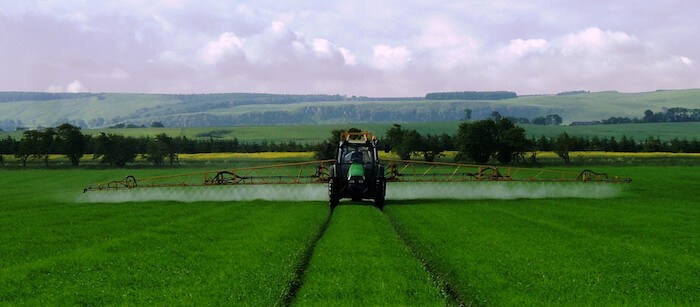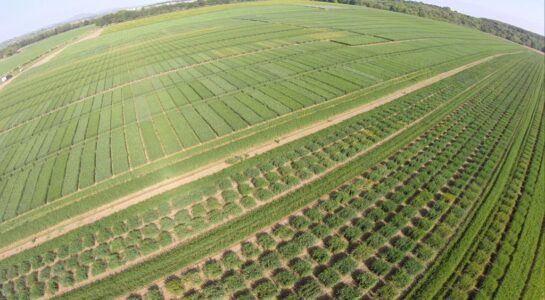
by Stevie Gray, Scottish Agronomy agronomist
Much has been said in recent months about the cost of inputs, the price of grain and the considerations to make sure you strike the balance between the two. At Scottish Agronomy over the winter months, we were no different. Many days were spent calculating breakeven ratios, then as the fertiliser market jumped to a new high, recalculating breakeven ratios. As a cooperative with over 250 members there is never a one-size-fits-all answer.
The need to optimise output is at the forefront of both growers’ and agronomists’ minds this year. Every decision needs to go under a well-lit microscope and with a particularly mercurial market for both buying and selling, it’s more critical than ever to keep a close eye on the three key factors that can nudge the margin: variety, product and timing.
Plant protection products have increased in price, though not as significantly as fertilisers. Tebuconazole, for example, is up 40% on last year. Some growers will be experimenting with IPM this year to reduce sprays, however, with wheat prices at a seemingly consistent high of up to £300/tonne, many remain open to a high input fungicide programme of even up to £150/ha, to ensure the crop is as thoroughly protected as possible.

Of course, ensuring we get the most value from inputs starts before the crop has been planted, with variety selection the first building block. At Scottish Agronomy, we have over 20,000 independent trial plots to draw specific insights from throughout the season. This includes how varieties are responding to disease pressure, response to fungicides and optimum fertiliser and growth regulator amounts.
Selecting the appropriate inputs for maximum returns on particular varieties is as important as the variety itself. Our trials give us access to the newest products to evaluate, thus being able to compare new products such as the Revysol and Inatreq families of chemistry, and other as yet unreleased material still undergoing the registration process. Retaining data and plots on older and existing chemistry prove invaluable in highlighting the responsive varieties where there is a clear benefit to using the newest chemistry, allowing evidence-driven decisions on what products bring the best yield from which varieties.
After selecting the appropriate variety and product comes the third and perhaps most unforgiving factor: timing, which can have a big impact on efficacy.
In wheat crops, we are now in the window for T1 applications. This kickstarts septoria control, but early or late application of the T1 can result in reduced efficacy of growth regulator products.
Winter barley crops are rapidly moving through the growth stages and on forward crops the awns are peeking out. Although disease levels in most winter barley varieties remain relatively low at the moment, the T2 timing is critical for adding ramularia protection.
Perhaps the hardest fungicide timing at this time of year is the flowering spray onto oilseed rape. With many crops being very uneven through damage from pigeons, rape winter stem weevil or cabbage stem flea beetle, more growers will be opting for the added security and longevity of protection offered by a two-spray flowering programme.
Scottish Agronomy trials have consistently shown that there is little to no response to autumn or stem extension fungicides targeting Light Leaf Spot, and so much of our membership now choose to redeploy that chemistry later in the season with robust flowering spray programmes that provide protection against Light Leaf Spot, Sclerotinia, and help to retain green leaf area by suppressing other diseases such as Botrytis and Alternaria.
The risk of Sclerotinia increases in wet weather as falling petals get stuck to the stem sandwiching the fungal spores between the petal and stem creating an environment that allows the fungus to invade and kill the stem.
Targeting the flowering spray fungicides to coat the petals before they start to fall is the most effective way to protect the crop. In an even crop, uncompromised by pest damage, some growers may opt for a single spray programme. This is a very weather-dependant strategy and requires dry conditions in the weeks leading to the application.
However, crops damaged by pests may have stunted plants that will flower at different timings, which makes applying just one spray very difficult as we typically expect 3-4 weeks of protection from one spray. With most crops showing a level of damage this season and the price of a tonne of oilseed rape currently sitting above £700, the two-spray programme will be favoured by many growers this season.
At such a busy time of year hitting the “ideal” timings and regularly reviewing decisions can seem like an impossible task. However, in order to maximise the return on the expensive inputs this season, it is the attention to detail which will count.

Stevie Gray is an agronomist at Scottish Agronomy, the farmer-owned cooperative offering leading, independent agronomy advice based on the findings from its 20,000+ trials plots in Scotland and over 35 years of experience in the field.